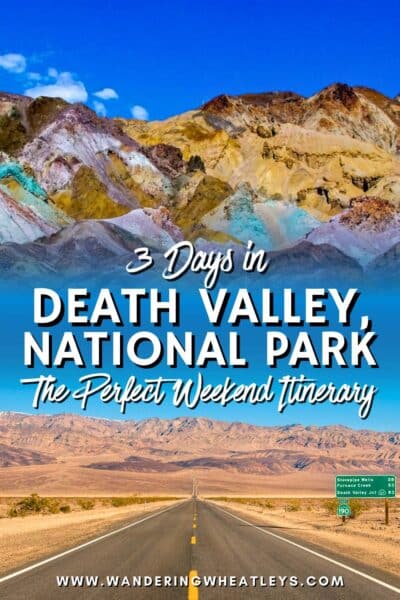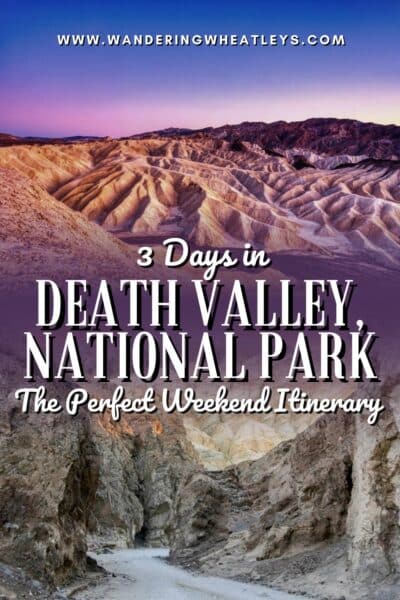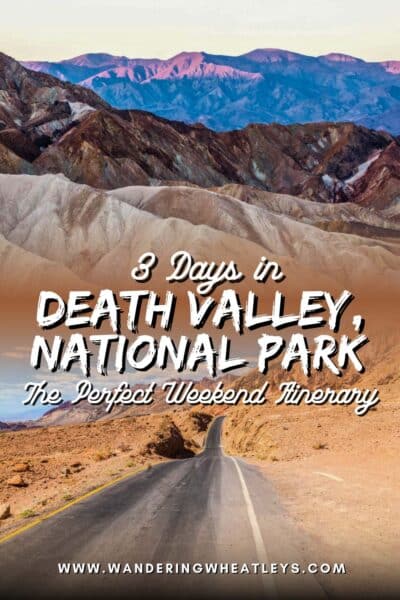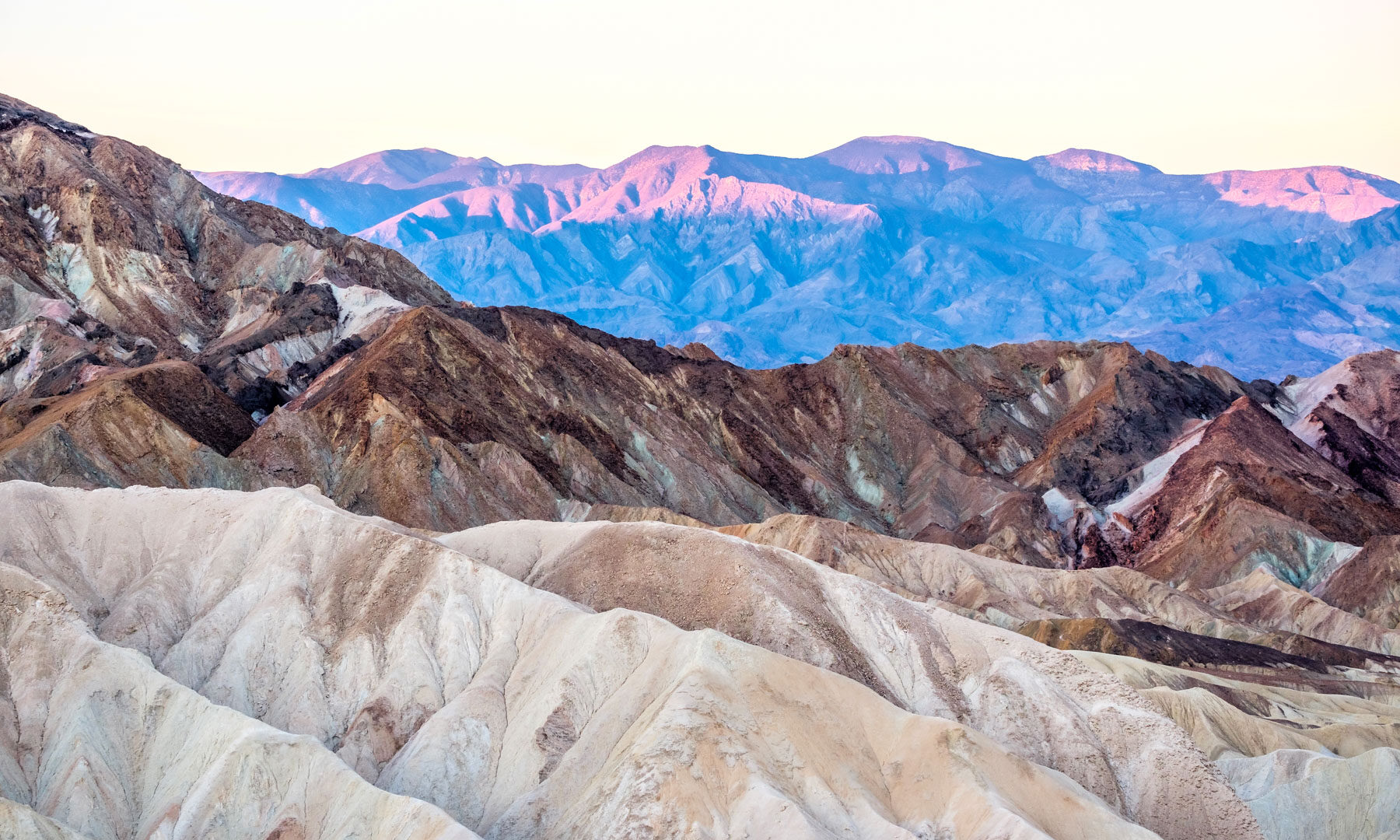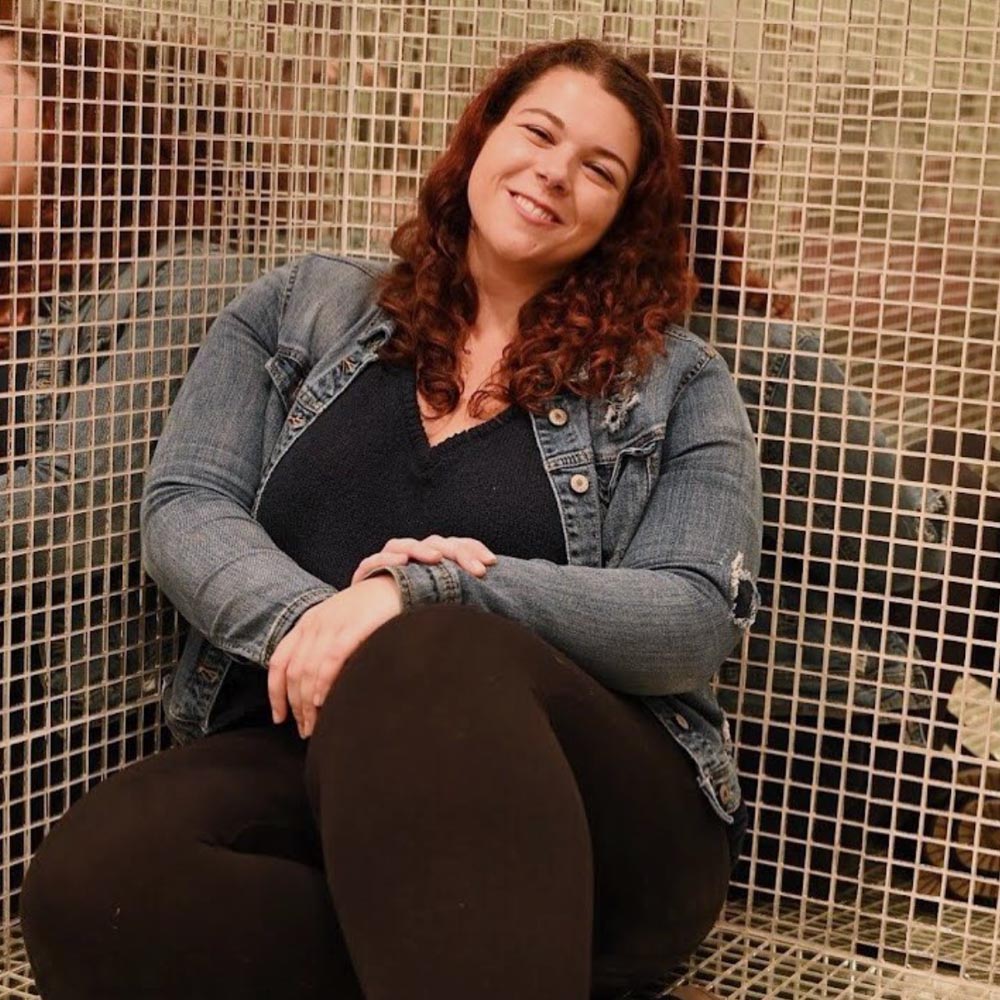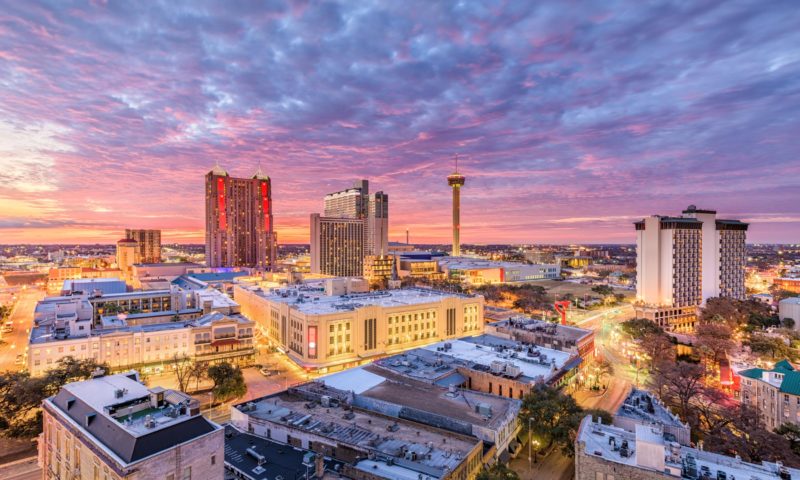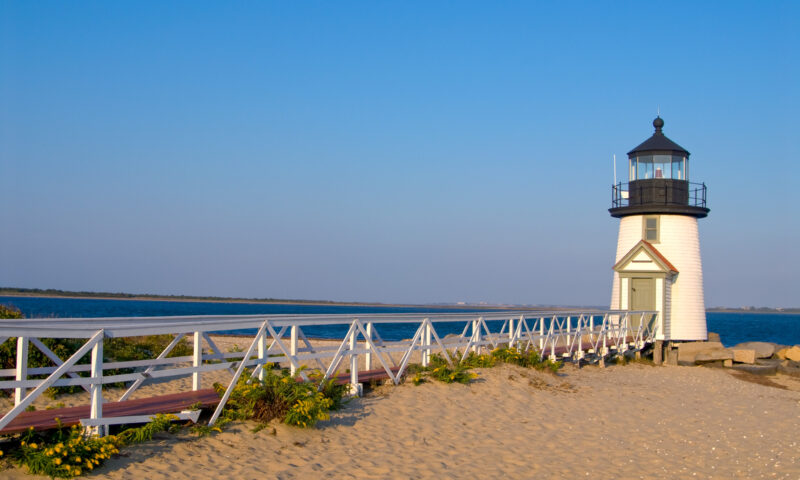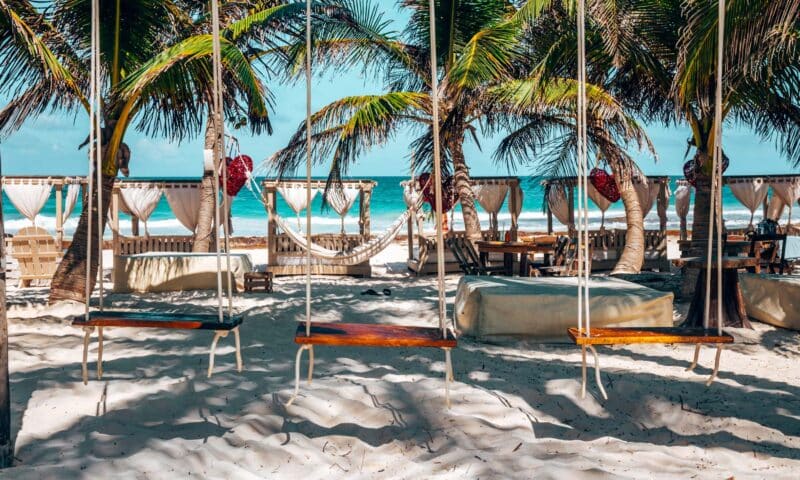Death Valley National Park is truly unlike any other place. For starters, it’s the largest national park in the continental US. It’s also home to the lowest point in the contiguous US.
Death Valley, as the name might suggest, is rather hot and dry, as well. In fact, it’s the driest location in the US. It also holds the record as the hottest place on Earth, thanks to one sweltering day in 1913 when temperatures reached 134 degrees Fahrenheit. But that day isn’t that much of an outlier. Temperatures often top 120 degrees in the summer.
Planning a weekend trip to Death Valley? We’ve put together a 3-day Death Valley itinerary that will help you see the best landmarks around the national park, from multicolored mountains to colossal canyons. Stick to this Death Valley itinerary, and you’re bound to have an incredible time in this one-of-a-kind place!
One quick note before we dive in: This itinerary excludes Scotty’s Castle, a beautiful villa located in the Grapevine Mountains that’s a famous landmark in Death Valley. Due to massive floods, Scotty’s Castle was closed in 2015. Although it’s worth a visit, as of the time of writing, it remains closed, and it’s unknown when it will reopen.
If you’re still deciding where to stay then make sure to check out our article on the best hotels near Death Valley National Park!
Disclaimer: This post may contain affiliate links. If you make a purchase or booking through one of our links we may earn a small commission (don’t worry, it’s at no extra cost to you).
How to Spend a Weekend in Death Valley National Park
When to Visit Death Valley
If you’re planning on visiting Death Valley, you should be careful about the time of year you plan your trip. Summer is generally too hot to hike. You’ll find heat advisories along several trails. However, summer typically starts in May, not June, here. And summer lasts into September.
Early-to-mid spring is one of the best times to visit, but you will have to contend with high crowd levels, which may make finding accommodations challenging. If you plan on camping, in particular, you’ll need to book your campsite far in advance.
Mid-October through Mid-April is the most ideal time to go if you want to avoid high temperatures that can prevent you from seeing all that Death Valley has to offer. Visiting in the winter months can actually mean chilly weather, as well as some rain and flooding. You’ll also find snow at higher elevations.
Getting Around Death Valley
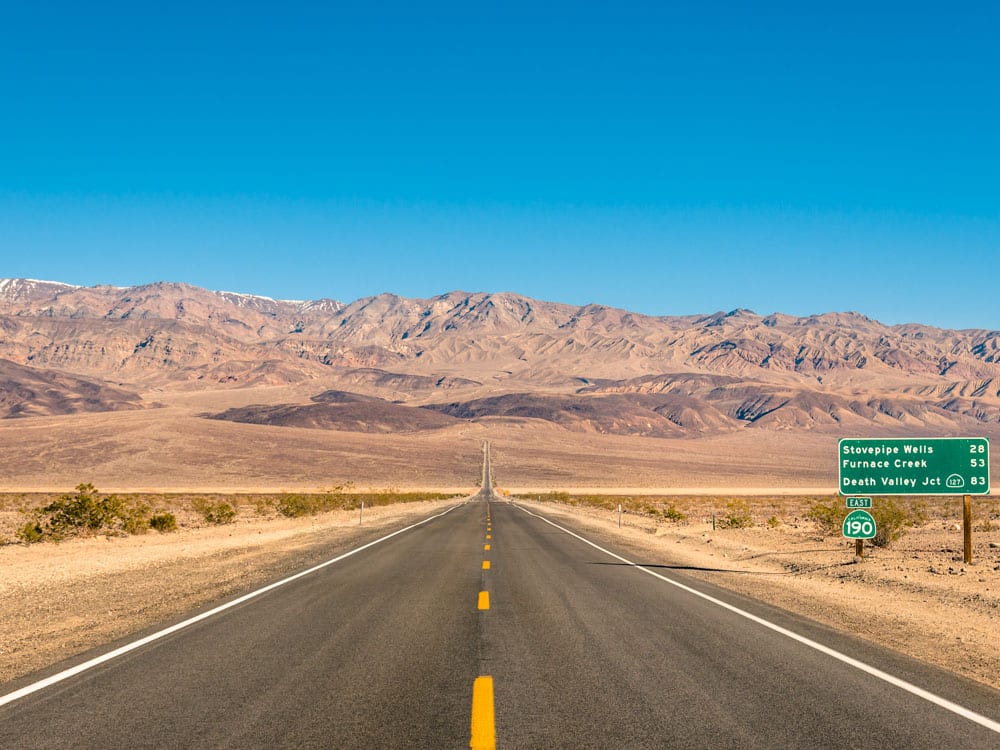
If you are planning on visiting Death Valley National Park, you will absolutely need a car. The only way to avoid having a car is by taking a tour. But if you want to be in control of your weekend in Death Valley, a car is necessary. Death Valley covers over 3 million acres. It’s neither possible nor safe to expect to explore Death Valley only on foot.
While biking around Death Valley is more doable, Death Valley can and often does reach over 100 degrees, even in the spring. So you’ll be grateful for being able to duck inside your car when it gets too hot and get a nice cool blast of air-conditioning.
If you’re renting a car, get one with four-wheel drive, as some areas, like Saline Valley, are only accessible by driving with four-wheel drive. If you have a car without four-wheel drive, you can head to Furnace Creek to pick up a Jeep from Farabee Jeep Rentals.
The other reason you’ll need a car if you’re not traveling with a tour company is the fact that getting to Death Valley from any airport requires driving. There is no public transportation that will take you from any airport to Death Valley.
If you’re flying into Death Valley, you’ll likely want to land at Harry Reid International Airport in Las Vegas. This airport will place you about two and a half hours from Death Valley’s east entrance. You can also choose to fly into California instead and land at Ontario International Airport, but that will put you about four and a half hours away.
However, if you want to add a stop at Mount Whitney to your Death Valley itinerary, flying into Ontario International Airport makes the most sense. Stopping at Mount Whitney, if you have the time during your trip, is particularly cool because you then get to say that you’ve seen the tallest point in the contiguous US and the lowest point, Death Valley’s Badwater Basin, on one trip!
From Mount Whitney, you can then continue on to the west entrance of Death Valley. There, you’ll start your weekend in Death Valley.
Death Valley Itinerary – Day 1
Before we dive into our Death Valley itinerary, we need to talk about the food situation. There are some restaurants in Death Valley, but they have limited hours.
You’re likely going to want to get early starts during your 3 days in Death Valley, which may mean that the restaurants will not yet be open for breakfast. To get the most out of Death Valley, it can be beneficial to start before sunrise, so you may not be able to rely on local restaurants to fuel you up before your hiking adventures.
Expect to make several of your own meals. It’s best to pack your own groceries before the trip, but if you didn’t shop before you entered Death Valley, there are several general stores you can stop at, like the general store located near the Ranch at Death Valley or the Stovepipe Wells General Store.
And no matter when you visit Death Valley, you’ll need plenty of water to get through the day. Always pack more than you think you’ll need because it gets hotter than you might imagine.
Dante’s View
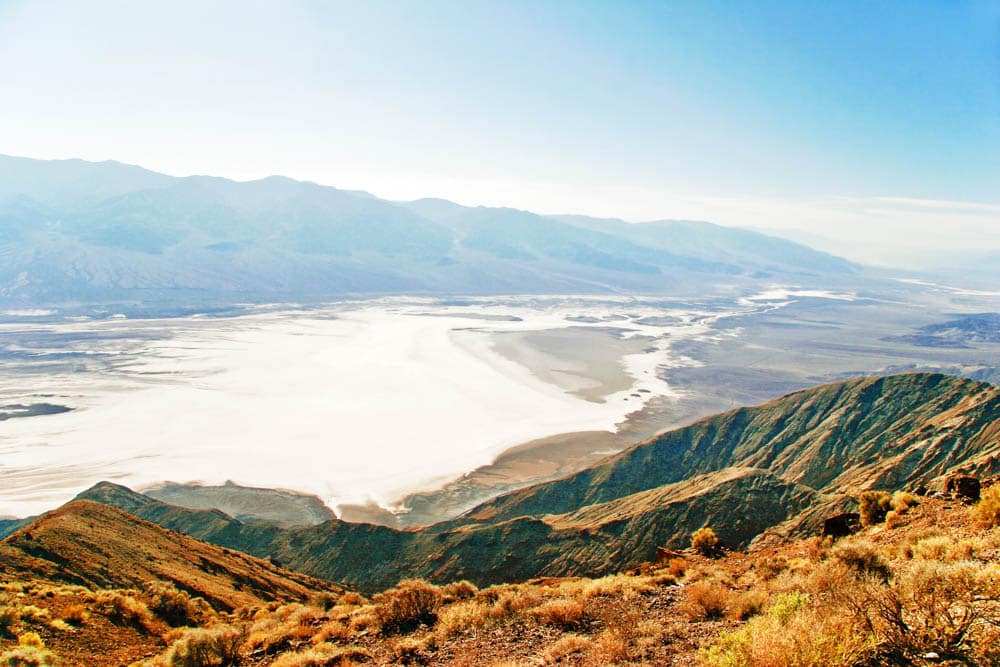
To start your first day in Death Valley, begin at Dante’s View. Ideally, you want to aim to be at the top about 30 minutes before sunrise. The out-and-back trail runs about a mile, making for a not-too-challenging hike for most experienced hikers.
Known for being one of the best views in Death Valley, Dante’s View is especially photogenic at sunrise or sunset. It’s also a great spot for stargazing. But just before dawn, you see the sky and mountains illuminated in technicolor, with splashes of pinks, purples, and blues beyond the horizon.
Artists Drive
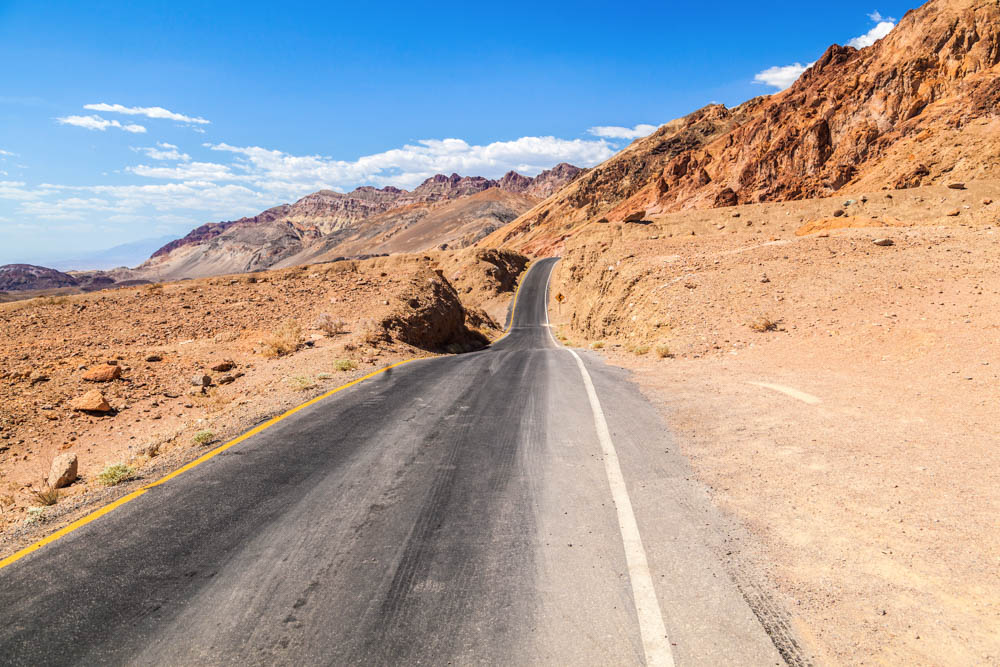
For your next stop, you’re going to see even more color. One of the most scenic drives in Death Valley is Artists Drive. This 9-mile, one-way trail takes you through multicolored hills that were formed by volcanic deposits.
It’s here that you’ll find Artists Palette, a stunning stretch of Artists Drive where the hills have turned red, orange, yellow, blue, pink, and green – all naturally. Although you’ll see these colors throughout Artists Drive, Artists Palette is the biggest highlight of the trip.
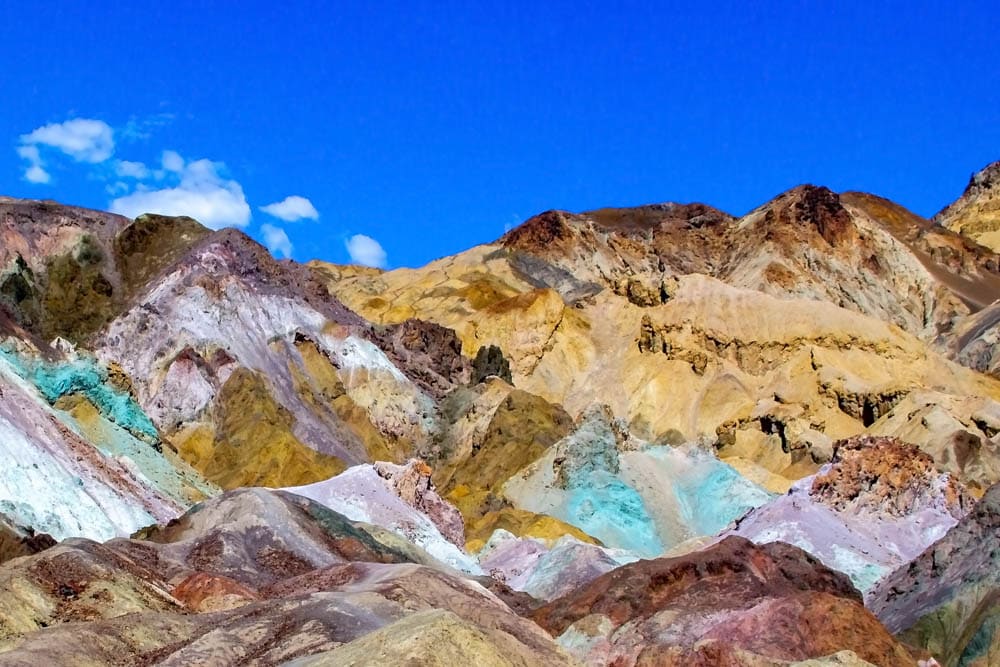
Next up, it’s time to take a little break from the sun. Grab a quick lunch at a general store or stop by one of the restaurants in Death Valley if you’re looking to sit for a bit. There are a couple of restaurant options near the Ranch at Death Valley, located in the Oasis at Death Valley complex.
But because these restaurants are rather overpriced for what they serve, we don’t necessarily recommend stopping in here. You’re better off picking up food from the general store. However, the old-fashioned ice cream parlor in the same complex is definitely worth a stop!
Devils Golf Course
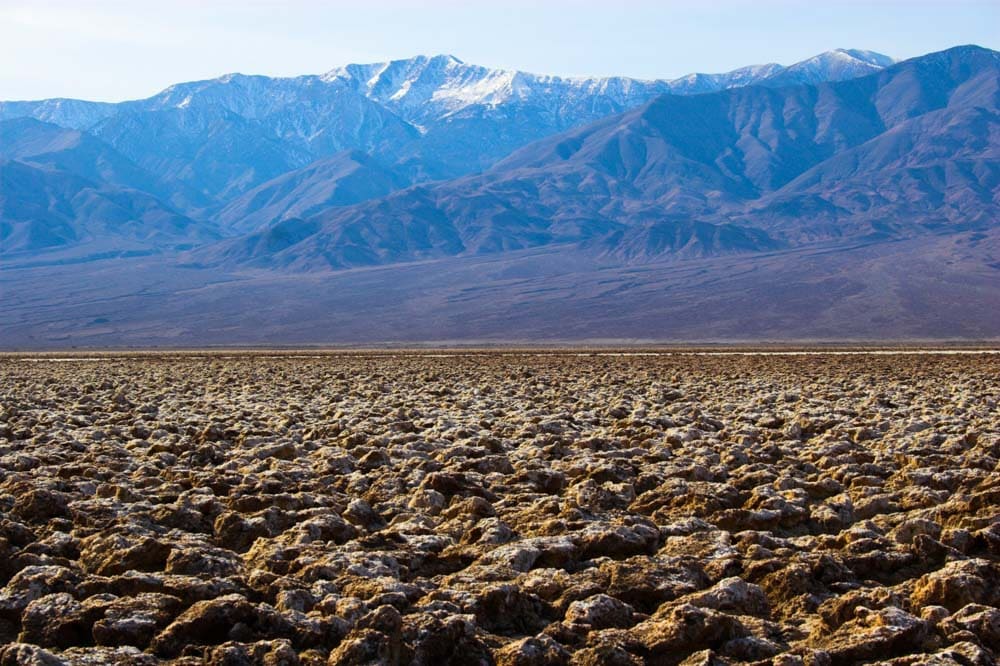
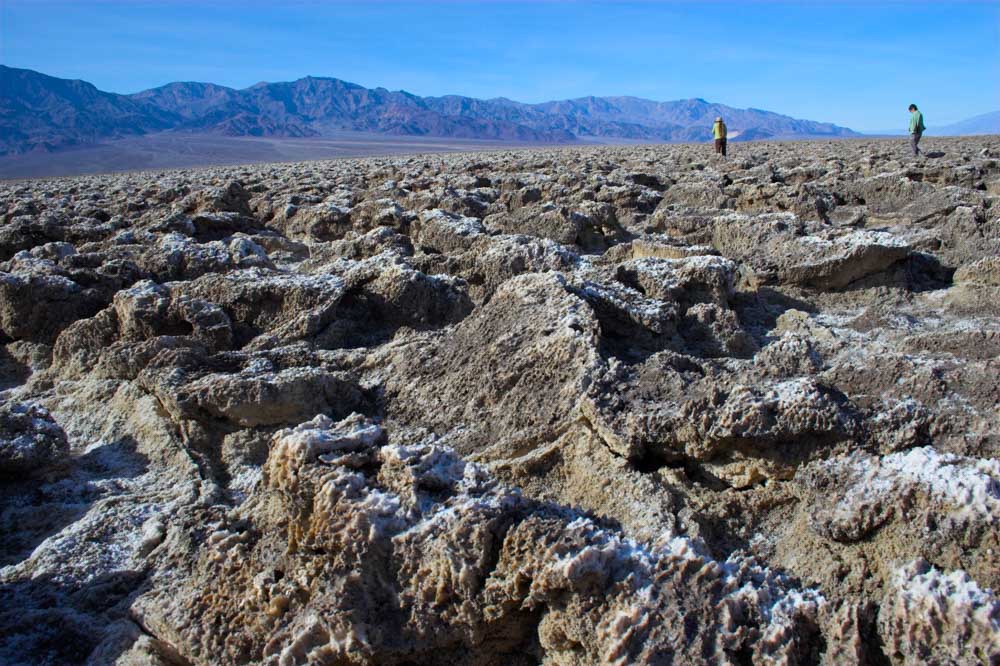
After you’ve refueled and taken a break from the sun, your next stop is Devils Golf Course. Requiring a generally easy 2.6-mile, out-and-back walk, Devils Golf Course is not actually, as the name suggests, a difficult golf course in the middle of Death Valley. It’s a massive area of rock salt that’s been eroded by wind and rain into jagged shapes.
The “golf course” took its name from a 1934 National Park Service guidebook that claimed, “only the devil could play golf on such rough links.” While you’re there, listen closely for tiny popping sounds. It’s the sound of billions of small salt crystals bursting apart from the heat!
Badwater Basin
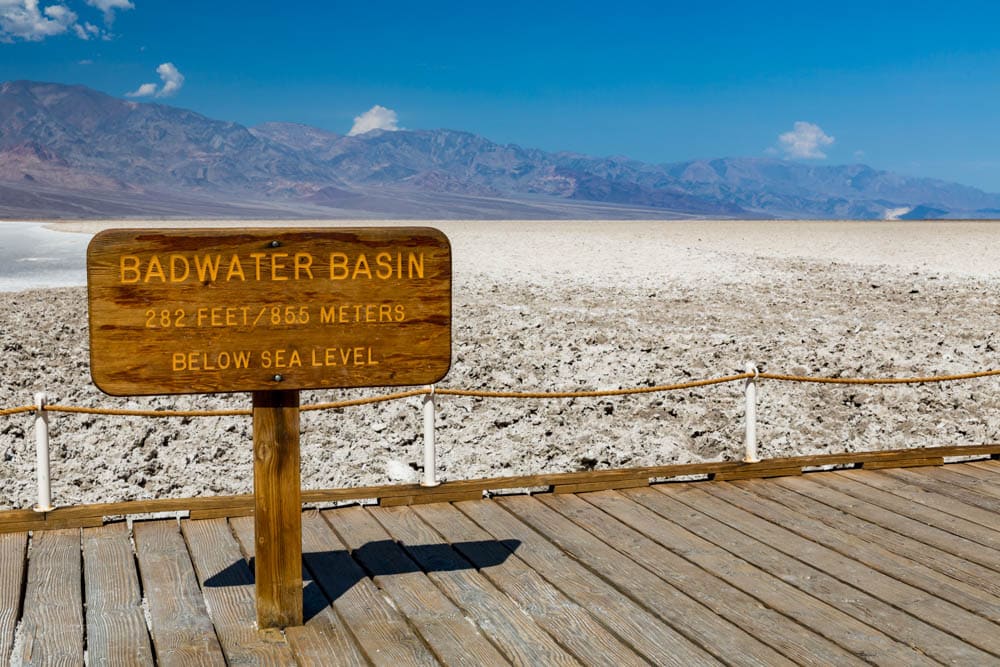
From there, head to Badwater Basin, the lowest point in the continental US, standing at 282 feet below sea level. What was once an ancient lake is now an expanse of salt flats covering nearly 200 square miles.
Badwater Basin is a rather surreal place to visit, and it also seems like a bit of a miraculous one, at that. It feels like it should be devoid of life, but many organisms call it home.
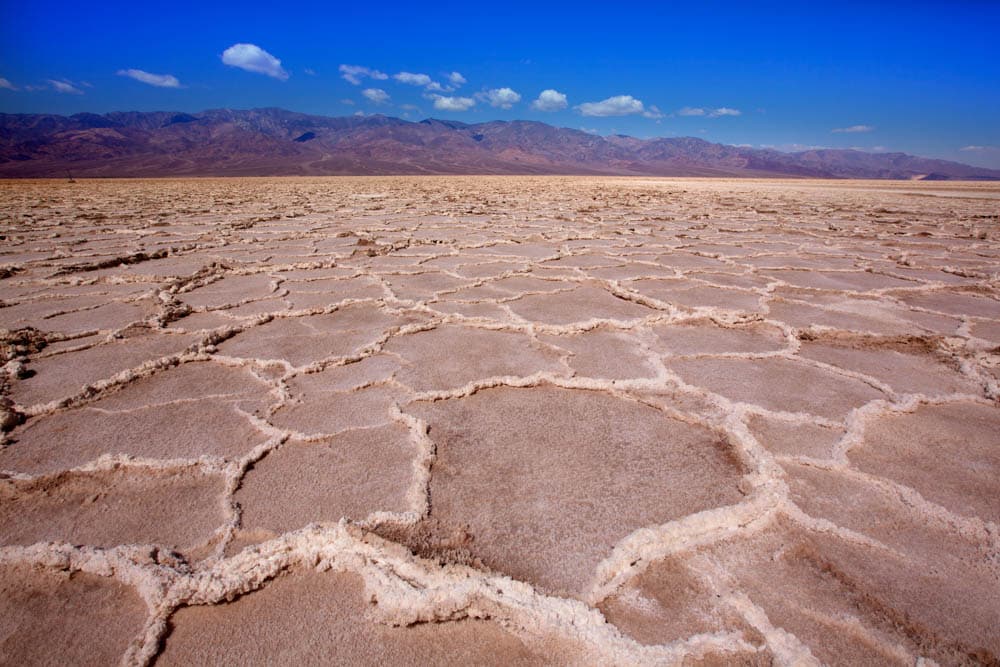
From the parking lot off Badwater Road, you’ll find a boardwalk. The view from the parking lot alone is rather stunning, but the best way to see Badwater Basin is by taking the boardwalk. Requiring about a 2-mile round-trip walk, you’ll be able to get out to the salt flats and see the Black Mountains beyond.
Badwater Basin is also one of the hottest points in Death Valley. You may want to try to time going here around sunset. If you’re arriving in the summer, which is not recommended, do not attempt to hike here after 10 am.
After you’ve seen Badwater, it’s time to grab some dinner. Most likely, you’re going to want to make your own meal, as any restaurants are a bit of a drive from here. That is unless you’re staying in a hotel with its own restaurant, like the Inn at Death Valley.
Death Valley Itinerary – Day 2
Zabriskie Point
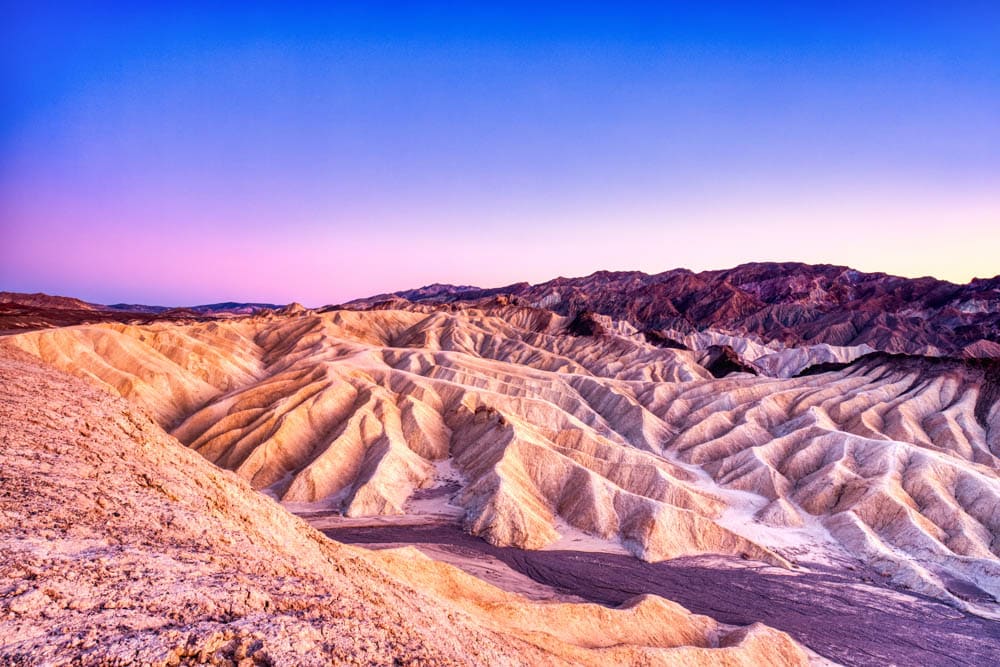
For the second day of your 3 days in Death Valley, you’re going to again want to get an early start. Your first stop is Zabriskie Point, which offers one of the best views in Death Valley, especially at sunrise.
After you fuel up with breakfast at your hotel or campsite, head over to this scenic point. From the parking lot, it’s only a quarter-mile walk up a hill to reach the best viewpoint, making this an easy trek for most hikers.
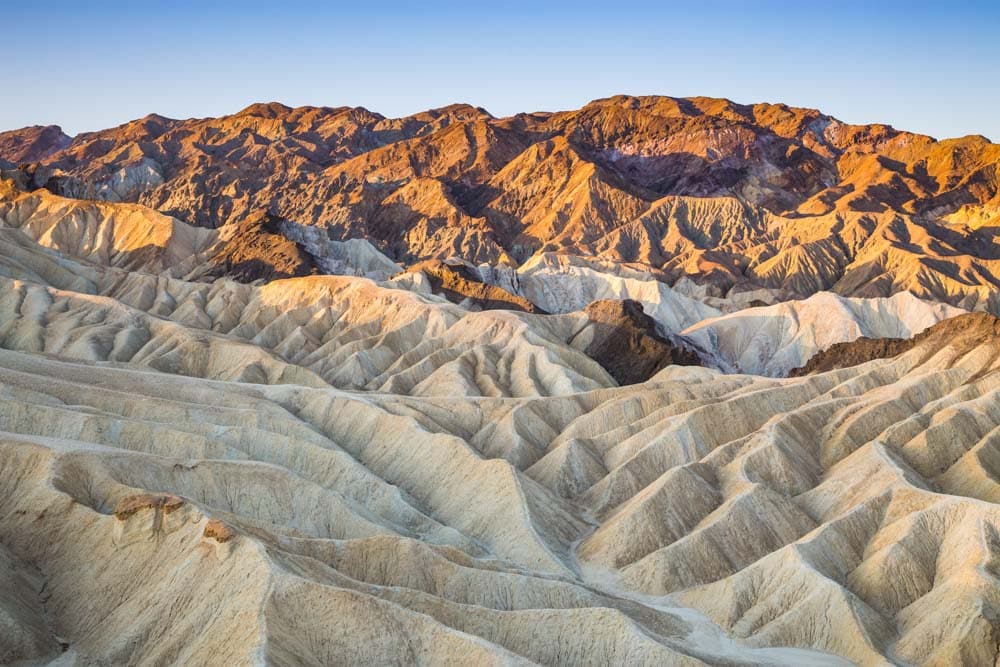
Head back to the parking lot if you want to take the Badlands Loop Trail. This 2.7-mile trail offers incredible views as you explore Zabriskie Point and Gower Gulch.
Golden Canyon
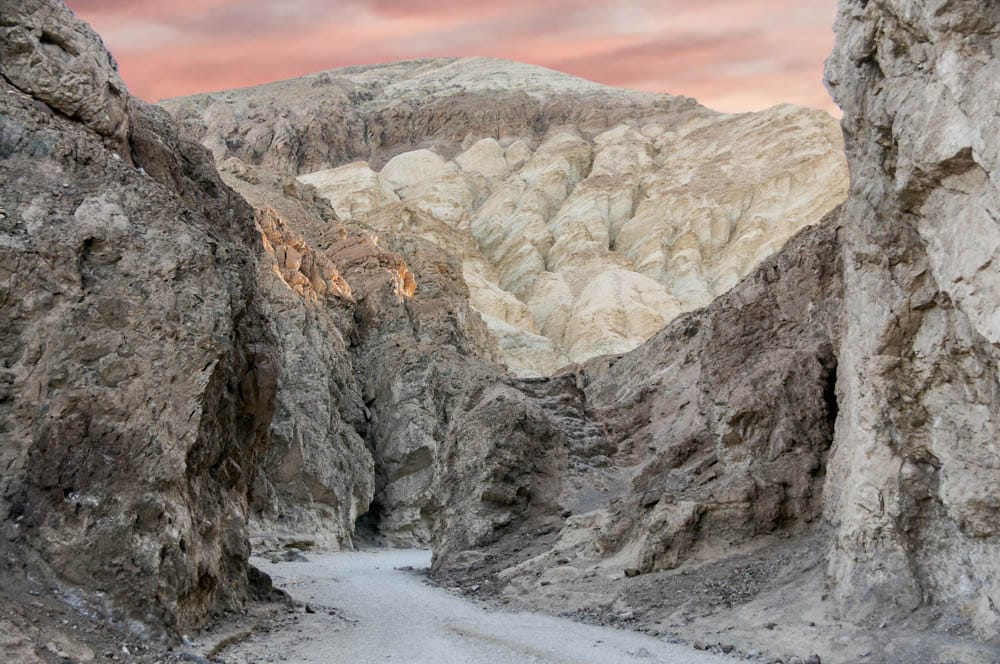
Your next stop is the Golden Canyon, which offers a trail out to the stunning Red Cathedral. This out-and-back trail runs for about 3 miles.
If you’re up for a more strenuous hike, you can combine these destinations in either the Gower Gulch Loop or the Complete Circuit, which both start at the Golden Canyon. For the Gower Gulch Loop, you’ll be taking a 4.3-mile loop, though you’ll want to add on an additional mile to reach the Red Cathedral. Throughout this loop, you’ll traverse the Golden Canyon and make your way through the badlands toward Gower Gulch.
During the Complete Circuit, which is a 7.8-mile loop, you’ll go from the Golden Canyon to the Red Cathedral to Zabriskie Point to Gower Gulch back down to the valley. Save for the Complete Circuit, which is considered a strenuous hike, all of these trails are labeled as moderate. Still, some minor rock scrambling is required, even during the moderate hikes.
Because of the length of these routes, you’ll likely want to eat lunch on the go today. Pack your lunch in advance and take a break when you’re ready.
Head back to your campsite or hotel room to have dinner, or make the trek over to Stovepipe Wells to visit Toll Road Restaurant & Badwater Saloon. Although there aren’t many dining options in Death Valley, of those available, this one tops the list. With classic American comfort food in a cozy rustic setting, you’ll find yourself right at home at this friendly and quaint restaurant.
Mesquite Flat Sand Dunes
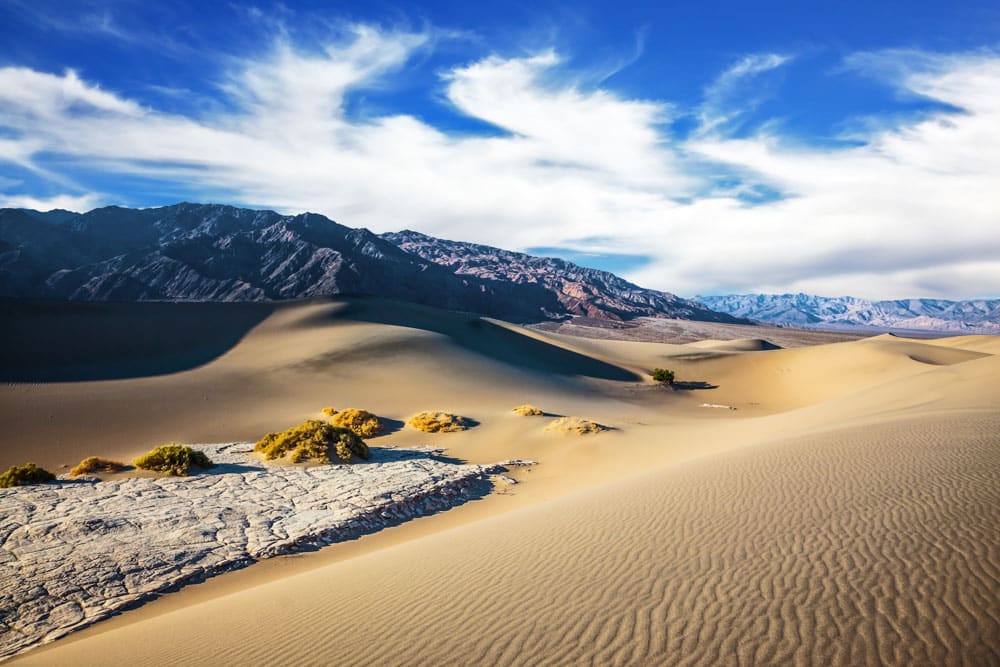
To finish out your day, you should head to the Mesquite Flat Sand Dunes, which is just nearby Stovepipe Wells. So named for the mesquite trees that grow in abundance here, the sand dunes offer stunning views of the mountains surrounding them. If you’re traveling with a photographer, they’re bound to want to set up shop here for a while.
There are no actual trails at the dunes, so you can walk out as long as you’d like. But remember to look out for the animals that call this area home, which can include sidewinder rattlesnakes.
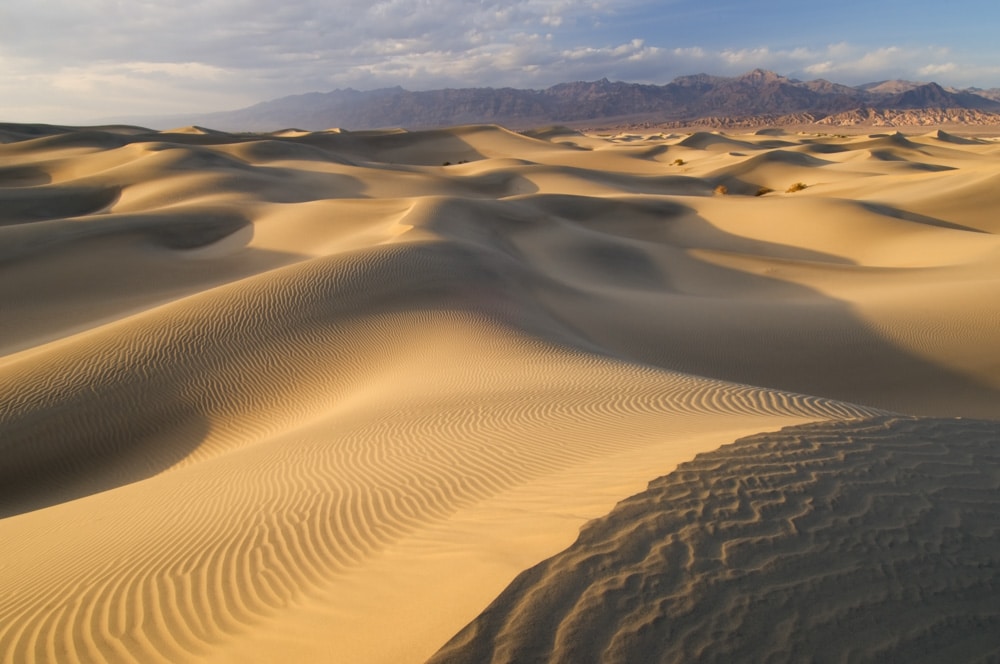
Stick around after sunset, as this spot is one of the best in the park to do some stargazing. Death Valley is famous for its dark night skies. Look for constellations, get some nighttime shots, and enjoy the peaceful night air in Death Valley. It’s one of the best ways to end the second day of your weekend in Death Valley.
Death Valley Itinerary – Day 3
Mosaic Canyon
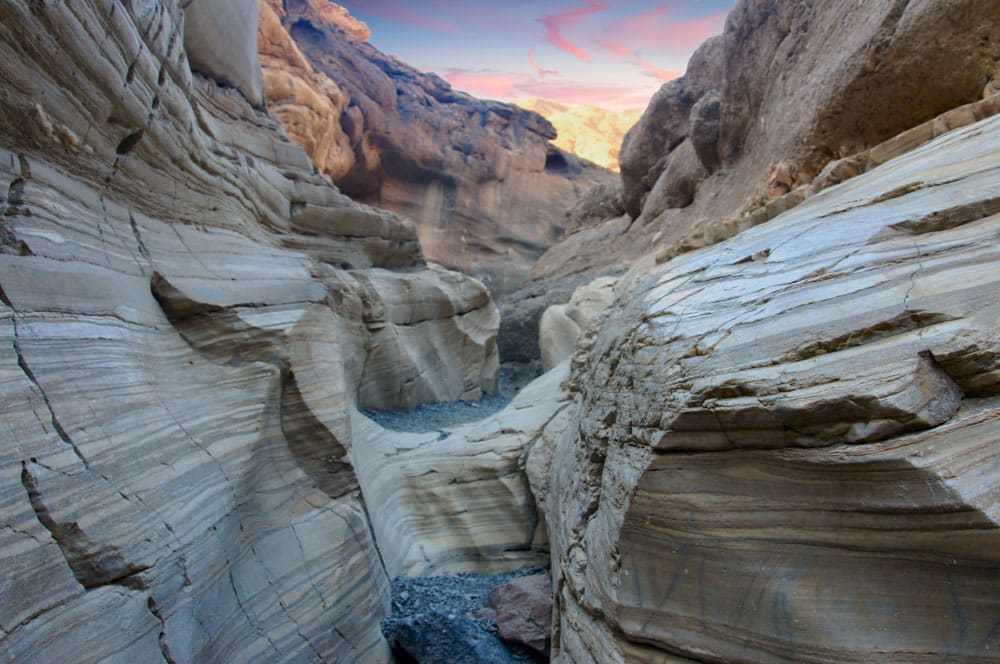
For the last day of your 3 days in Death Valley, after breakfast at your hotel or campground, you’re off to another colorful canyon, Mosaic Canyon. You’ll take a 3.4-mile, out-and-back trail through the canyon.
While there, you’ll see how it got its name. It’s known for its Mosaic Breccia, which is the Italian word for “fragments.” This formation, composed of many different kinds of parent rock, can be seen on the canyon floor just south of the parking lot. Throughout the canyon, you’ll find many different types of rocks creating “mosaics.”
After Mosaic Canyon, grab lunch at the Toll Road Restaurant at Stovepipe Wells. Or you can always pack a lunch ahead of time and eat it on the go.
Darwin Falls
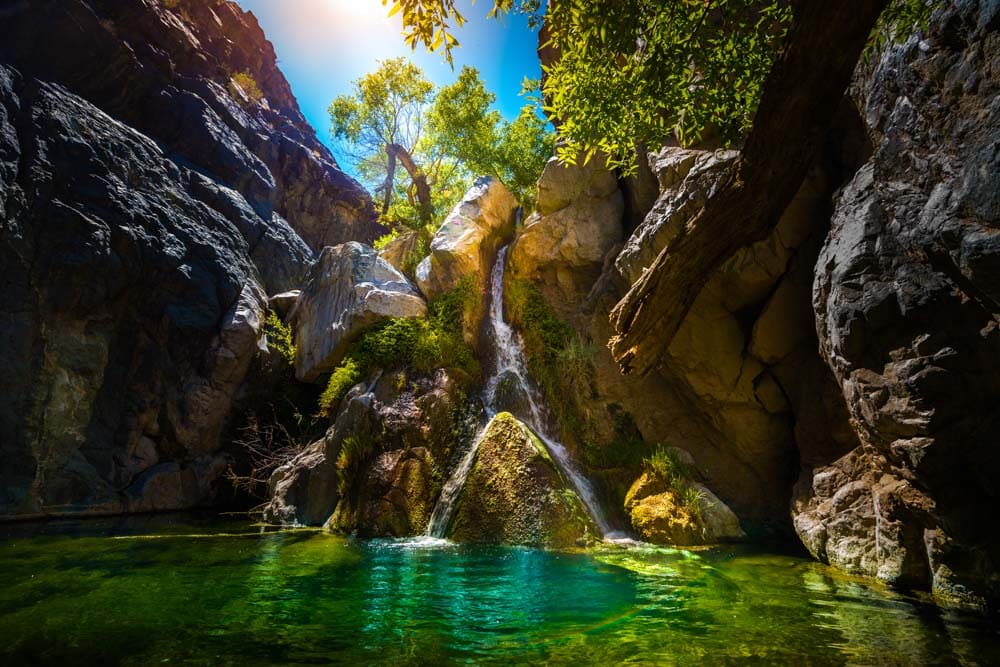
For your next adventure, you’ll be taking one of the most beloved trails in Death Valley, though it’s not technically a marked trail at all. You’ll be heading out to Darwin Falls, which requires a two-mile, out-and-back walk.
You might not think that a waterfall belongs in Death Valley, but Darwin Falls exists all year round. The spring-fed waterfall allows for lush vegetation, which is hard to find in this national park. If you visit in the spring, you’ll be delighted to see all the beautiful wildflowers along this trail.
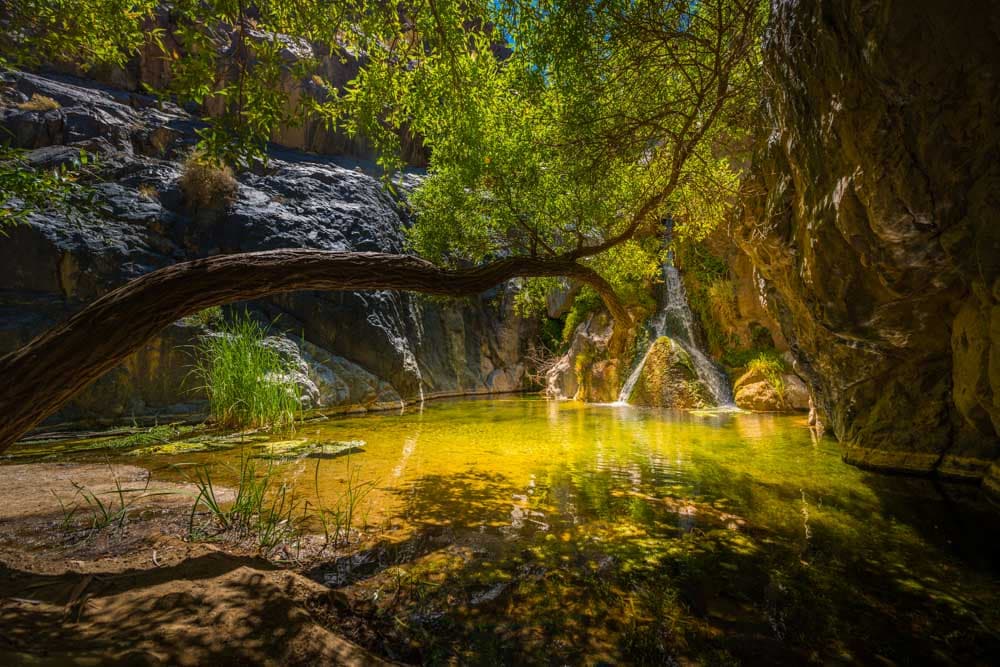
However, this trail can be particularly hot in the summer. It’s not recommended to attempt to hike this trail after 10 am in the summer months.
And although you’re heading toward water, you can’t actually use it to cool down. The stream the falls feed into is a drinking source for the Panamint Springs Resort. The trail, as it’s technically unmarked, does require some hiking experience. Although much of it is flat, you will have to cross streams and potentially scramble over some rocks.
Father Crowley Vista Point
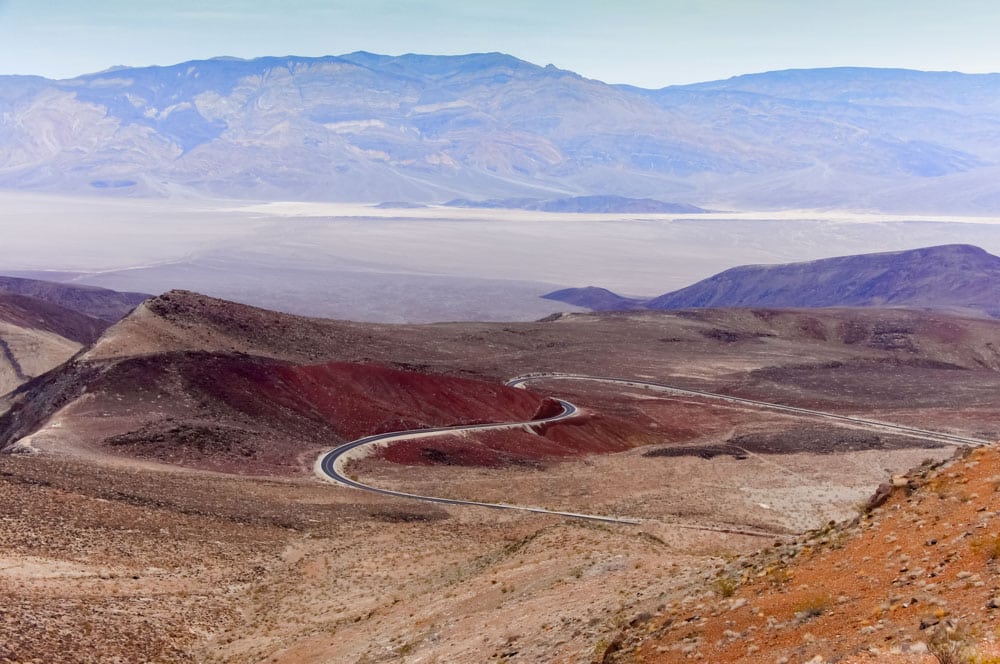
After Darwin Falls, take a short detour over to Father Crowley Vista Point, which offers incredible views of Rainbow Canyon, a colorful canyon created by ancient volcanic activity. It’s been a favorite stopping point for visitors since before Death Valley National Park was even created and would be named for one of its many visitors, Father John J. Crowley, also known as the Desert Padre.
You’ll end your day right by Panamint Springs, so grab a bite to eat at the Panamint Springs Restaurant. It’s a great place for a good burger and a cold beer.
What to do if you have more than 3 days in Death Valley
Las Vegas
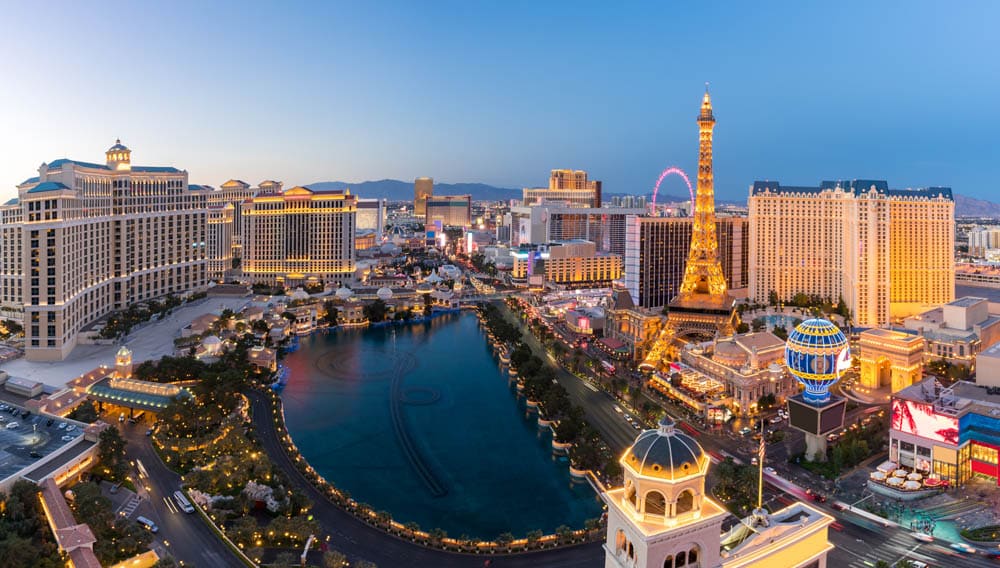
Plan a day trip to Las Vegas. If you’re arriving at the Harry Reid Airport in Las Vegas and have an extra day of vacation, spend some time exploring the city. There’s more to do than just the Strip, though the nighttime entertainment throughout the Strip is tons of fun, especially if you enjoy live shows. Book tickets to shows you really want to see in advance of your trip to ensure you can get seats.
Red Rock Canyon
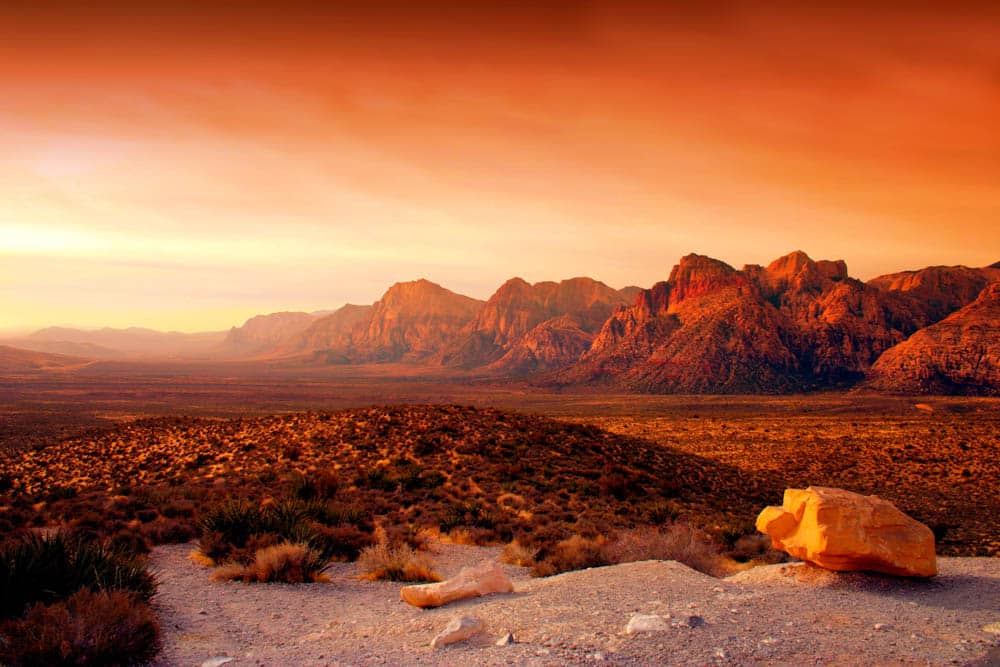
Explore Red Rock Canyon. If you’re coming to the eastern entrance of Death Valley, you can add Red Rock Canyon to your Death Valley itinerary. The canyon itself has much less to explore than Death Valley, but its stunning red rock canyon walls make for quite a sight and are worth a trip if you have extra time on your Death Valley vacation.
Mount Whitney
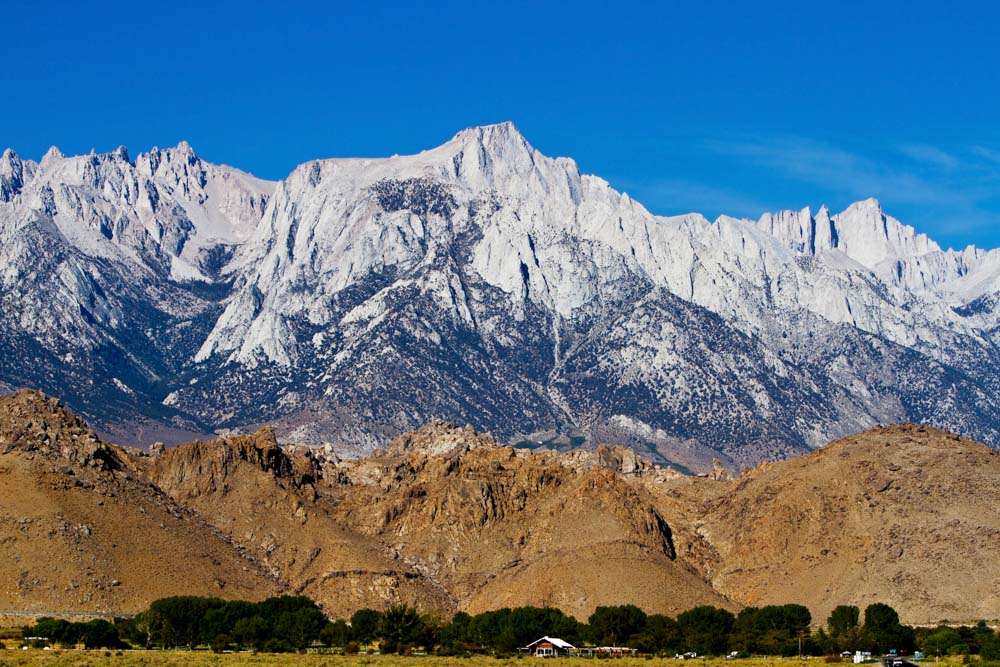
Hike around Mount Whitney. If you’re coming from the California side, take a little detour to see Mount Whitney, the tallest point in the continental US. It’s a great extension of the beautiful views you’ll see during your Death Valley trip.
Rhyolite
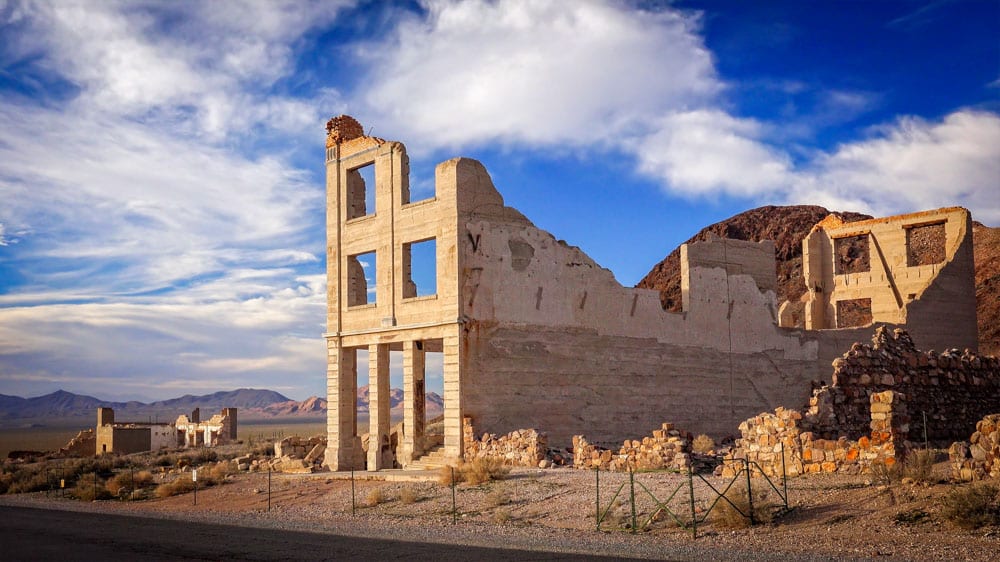
Tour Rhyolite. The ghost town of Rhyolite is just outside of Death Valley National Park, and it’s one of the best-preserved ghost towns in America. Explore the ruins of Rhyolite, whose heyday was rather short but still left behind a rich history.
Saline Valley Hot Springs
Visit the Saline Valley Hot Springs. Located in Death Valley National Park, these hot springs are truly a hidden gem, mainly because it’s a bit of a trek to get to them. But when you get there, you’ll be able to soak in soothing pools while taking in incredible views. However, you’re going to need a four-wheel drive vehicle. Even still, driving on the dirt roads to get there can take anywhere between two to four hours one-way.
We hope you enjoy your weekend trip to Death Valley! Should we add something else to our 3-day Death Valley itinerary? Let us know in the comments.
Planning a trip to California? Check out our favorite travel guides and resources!
SHARE THIS ON PINTEREST
